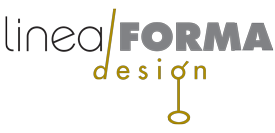I’ve written about my love of miniatures and models here before. This year marks the twentieth anniversary of my own model product, The San Francisco Victorian paper model kits, which came out in November 1998.
Back in 1996, I went to Italy to attend the annual Milan Furniture Fair. I had visited several Neocon Furniture Shows in Chicago during my years working as a furniture designer in California in the 1970’s, but Milan was always the “Big Show” I needed to see. The show was all that I hoped it would be for three full days of eye opening creativity. On the last day, I stopped by the huge gift shop at the show and discovered the most amazing paper models of the Eiffel Tower, London Bridge, St. Peter’s Cathedral and plenty of others. They were full color, highly detailed and accurate. They also cost $50-150 each! Did I mention they were paper models? Still on flat sheets of heavy paper, waiting to be punched out, folded and assembled. At that price, I could only bring one home, so I picked the St. Ambrose cathedral in Milan, as a memory of the trip. At the show, all the models seemed to be selling well. I think the fact they were flat, like slightly oversized presentation folders made them an easy gift to pack and fly home with.
As a lifelong modeler and one who had worked in the scale model railroad industry for several years in my early 20’s for a manufacturer of limited edition model kits, Scale Structures LTD, I thought I had a pretty good idea of what went into creating a model. During my time there, I learned centrifugal casting and I built the first prototypes of each model kit for marketing photographs. I also built several city blocks of buildings for their model train display dioramas. Below is a turn of the century street scene I built and gave to my father who displayed it in the lobby of his restaurant for many years to entertain waiting customers.

The model I brought home from Italy got me excited about the possibility of creating paper model kits for a more American audience. I thought several street scenes from distinct architectural styles like the NY Brownstones and SF Victorians might be a fun product line for all ages to enjoy. Since I had a strong understanding of the SF victorian styles, I picked them for my first products. And I went for the iconic photo group that is seen on half of all SF postcards, on the edge of Golden Gate Park, with a Queen Anne, a Stick, and an Italianate style design in a row. Working from numerous photos of each house, I scaled them down to HO (a model train scale, 1:87 actual size, created them all in Adobe Illustrator, and colored them like the actual houses. Each house got all four walls, roof, porch, stairs and all the “gingerbread” a Victorian demands.
I decided to make each house something that could stand by itself, but I produced the 3 houses as a set with a long enough section of the steep street they live on included in the kit, to build a complete scene. The kits were sold in a presentation folder format, with five printed sheets inside, all scored and die-cut, to make it easy to punch out, fold, and “insert tab A into slot “B”, as well as 16 pages of instructions filled with isometric drawings of my finest technical illustrations, showing the models in various stages of assembly.

Maren and I took several selling trips to the Bay Area and got our models into the SF Museum of Modern Art gift store, and numerous shops on Fisherman’s Wharf, Pier 39 and Ghirardelli Square, as well as an international paper model kit catalog. We sold a few thousand of them over the coming years, but never enough for us to move forward on other city scenes. And although many other museums expressed interest, they all wanted to buy a product line, not a single product. And maybe we hit the market just as the world was deciding their own interactive screens were more fun than building real models. What IS reality anymore?
We made a bit of money, learned a ton, proved it was possible, and made a beautiful product that I feel very good about. And it made me a master at isometric technical drawings. So, to celebrate the twentieth anniversary of the model, I’m looking at ways to actually build my paper models inside the computer, maybe in Maya, my 3D program, but firstly, in Adobe Illustrator using its built-in perspective grids to let me create the illusion of a 3D model in 2D. I have drawn thousands of isometric drawings in my life. You see them in most infographics — faked perspective drawings where the lines are always parallel to each other, and everything always lines up everything else. The perspective grids will let me build the drawing using my actual model’s flat artwork, and then snap it into the grids to look more like a 3D image. Below is the start of the Queen Anne model snapped to the grids to show what I’m talking about.

It’s very fun to revisit my tiny houses, now with digital construction!
Share this:


7 Responses
Lynne
Very cool!
bgob1
Thanks, Lynne. I started making some of those models in the black and white photo when we were neighbors in 1972!! Seems like yesterday (no it doesn’t).
Elisa
Those first tiny homes were the coolest, Bill! Have fun now rendering them on a computer. You’re amazing!!
Seana
So awesome UB! That sounds like something that Luke would enjoy if you have any left.
bgob1
Oh oh. I’ll have to get back to get back to you, Seana. xo See my response to Steven.
Steven
Any of the paper ones left? That would be SO much fun to build. I remember when Apollo 13 landed on the moon. International Harvester was giving away a paper model of the Lunar Module. I sent away for it and had a ball putting it together. Would love to do the same with these Victorian models!
bgob1
Steven. What a guy!! I may have a few of them left but they’re pretty buried away. I’ll let you know if I can find them, for sure. Thanks.